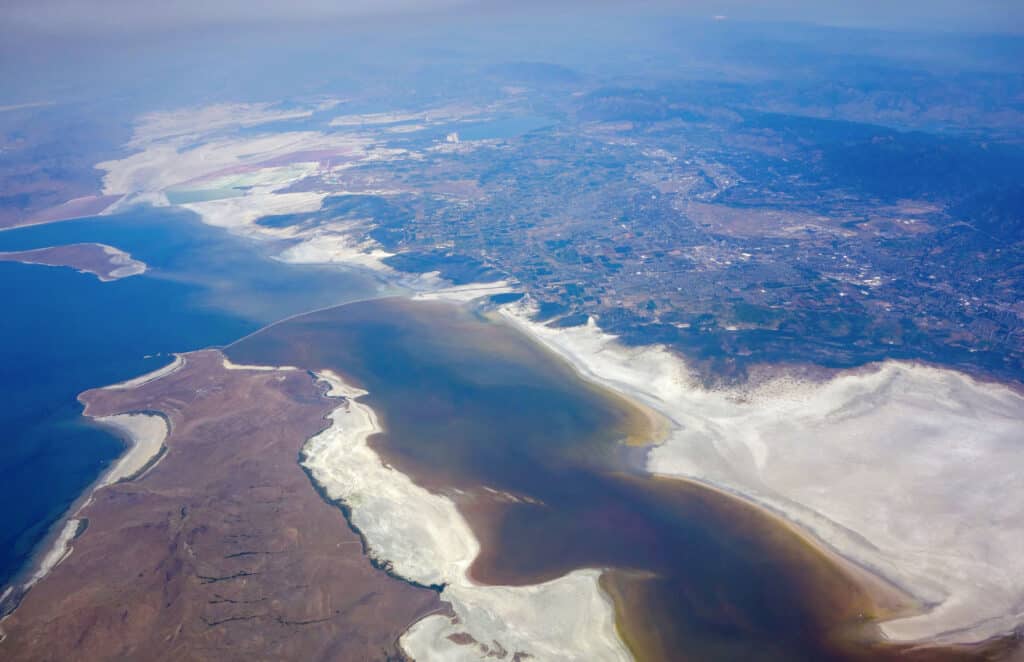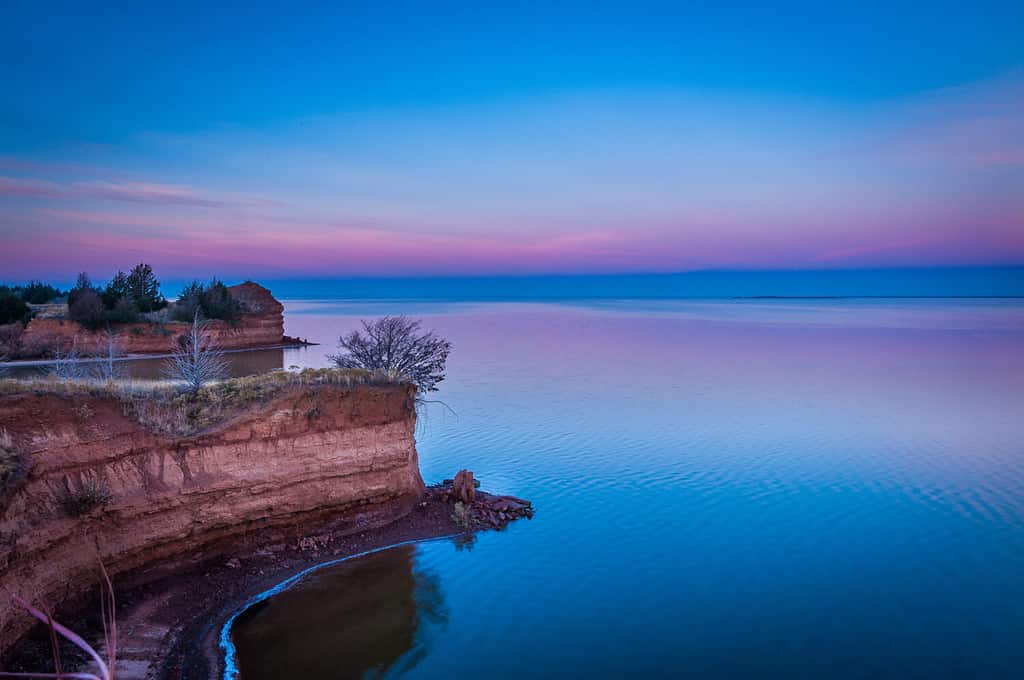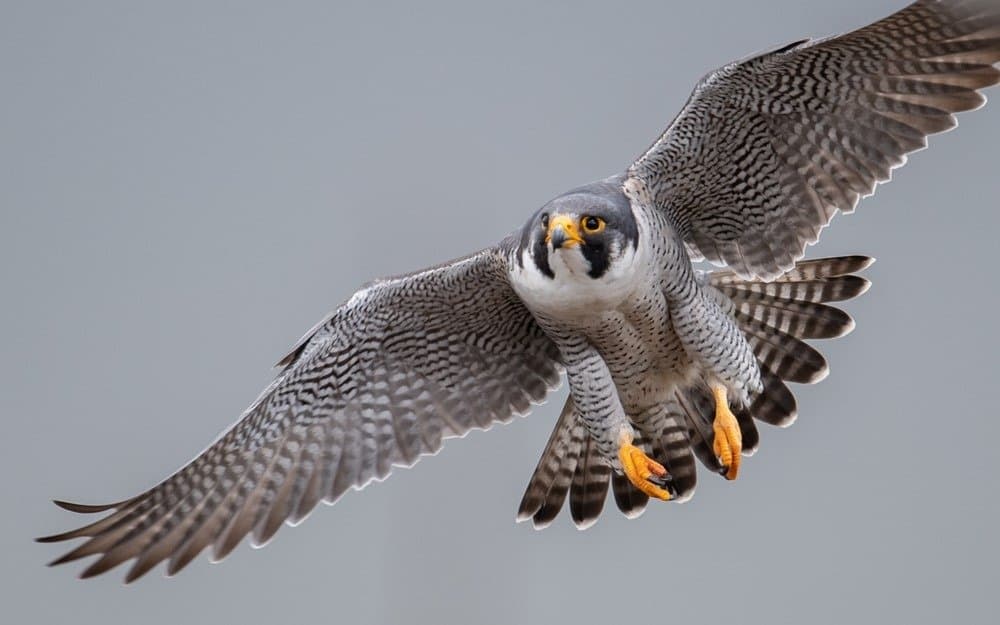Let’s embark on a journey to the magnificent Great Salt Lake, a natural gem in the north of Utah. The Great Salt Lake stretches across an impressive 1,700 square miles. Created by the interplay of geological and climatic phenomena over countless years, the lake’s history only adds to its charm. Prepare to be captivated as we explore this awe-inspiring natural treasure and uncover its many hidden wonders.

Location
Situated in the Great Basin region, you can find the Great Salt Lake in the north of Utah. This captivating body of water is 18 miles west of Utah’s bustling capital, Salt Lake City. It is gracefully flanked by majestic mountain ranges, including the Wasatch Mountains to the north and east and the Oquirrh Mountains to the west.
A diverse collection of rivers and streams, like the mighty Bear River, breathe life into this remarkable lake. With no route to the ocean, the Great Salt Lake is deemed to be endorheic. That means that it loses water only through evaporation and water seeping into the ground. Its unique location within a desert landscape leads to substantial evaporation. This factor bestows the lake with its defining characteristic: an impressive salt content that captures the imagination of all who visit.

The Great Salt Lake is 18 miles west of Utah’s bustling capital, Salt Lake City.
©Thomas Barrat/Shutterstock.com
History
For thousands of years, indigenous peoples like the Ute, Paiute, and Shoshone have inhabited the region. These tribes have been known to live around the Great Salt Lake for centuries. They primarily relied on the lake’s resources for sustenance and salt. European explorers first encountered the lake in the mid-1600s, with the Spanish leading the way.
In the 19th century, the Great Salt Lake gained significance for the burgeoning Mormon community in Utah. The Mormons utilized the lake’s salt for preservation purposes and commerce. They also went on to establish various settlements near the lake, with Salt Lake City ultimately becoming the Utah Territory’s capital in 1896.
These days, the Great Salt Lake is renowned as a tourist hotspot. It is also a crucial ecosystem for migratory avian species such as pelicans and sandpipers. Nonetheless, the lake faces a multitude of environmental obstacles, including water diversion, contamination, and a receding shoreline. In spite of these difficulties, the lake continues to hold a significant position in Utah’s cultural and natural legacy.
Size and Depth
The Great Salt Lake is located at an altitude of 4,200 feet. It is prone to fluctuations due to factors such as evaporation rates and water inflow from its tributary rivers. With an area of about 1,700 square miles, the lake extends 35 miles wide and 75 miles long.
The lake reached its highest recorded size of 3,300 square miles in the 1980s. However, increased water diversion upstream and prolonged drought have caused the lake to steadily decrease in size since then. In 2021, it hit a record low of 950 square miles, even below the previous record low observed in 1963. The continued decrease in size is a major concern, as it may lead to the formation of a toxic dust bowl. This dust bowl could ultimately pollute the air around the population, including Salt Lake City.
The Great Salt Lake is divided into two distinct regions, northern and southern, by the Lucin Cutoff causeway. These regions exhibit varying elevations. The southern portion generally has water levels 0.5 to 2 feet higher than the northern portion. This is due to the majority of water inflow coming from the south.
Typically, the Great Salt Lake has a shallow depth, averaging around 15 feet at normal water levels. Its deepest point is approximately 35 feet.

The Great Salt Lake has a shallow depth, averaging around 15 feet at normal water levels.
©Lamar Sellers/Shutterstock.com
Water Level
Since measurements began in 1875, the Great Salt Lake’s water levels have typically been around 4,200 feet above sea level. The lake features shallow depths and gently sloping shores, apart from its southern side. This means even minor changes in water level substantially impact the shoreline’s reach.
Extended periods of dry or wet weather, which could be attributed to drought or high precipitation years, can cause significant declines or rises in water levels. Factors such as low-frequency atmospheric currents influenced by the Pacific Ocean and water diversion for agricultural and urban demands also contribute to lake-level fluctuations.
By December 2022, the Great Salt Lake’s minimum recorded surface elevation was 4,188.5 feet. Iits maximum was 4,211.2 feet in April 1987. Human actions within the watershed have resulted in an 11-foot reduction in lake water levels since the late 1800s. These variations in water level and salinity have important implications for the surrounding ecosystem and economy.
Geology
Approximately 30,000 years ago, the Great Salt Lake was part of the much larger Lake Bonneville, which was a massive freshwater lake. Unlike Lake Bonneville, the Great Salt Lake lacks an outlet, allowing water to flow in but not out. This causes water to evaporate, leaving behind dissolved minerals. The lake receives around 2.2 million tons of salt each year from several rivers, such as the Weber, Jordan, and Bear Rivers.
The Great Salt Lake has significant commercial importance. In fact, companies extract between 1.6 and 2.5 million tons of salt annually from the lake. However, this only represents a fraction of the 4.3 billion tons of salt present in the lake.
Although the Great Salt Lake shares similarities with the ocean, its salinity is significantly higher due to the natural evaporation process. The northern part of the lake is saltier than the southern part. This area of the lake hosts several species of purple salt-tolerant bacteria and a red pigment alga, resulting in a purplish-pink hue, especially when salinity levels exceed 25%.
Fishing
While the Great Salt Lake is not known for its fishing opportunities, there are some limited options available near the marina and freshwater inlets. Most of the lake’s water is too salty to support other aquatic life larger than brine shrimp and algae. However, during the spring runoff season, some areas near the lake’s inlets offer opportunities for anglers.
Bear River Bay and Farmington Bay are two popular spots for fishing near the Great Salt Lake. During the spring runoff season, freshwater flows into these bays, providing an opportunity for different fish species.
Bear River Bay is known for channel catfish, blue catfish, grass carp, and smallmouth bass. On the other hand, the most caught fishes in Farmington Bay are largemouth bass, rainbow trout, and black bullhead.

The northern part of the lake hosts several species of purple salt-tolerant bacteria and a red pigment alga, resulting in a purplish-pink hue.
©Eric Broder Van Dyke/Shutterstock.com
Camping
Setting out for camping at Utah’s extraordinary Great Salt Lake delivers a unique experience, enabling you to dive into the stunning landscape and relish mesmerizing sunsets. Opt for the Great Salt Lake State Park for an excellent camping opportunity, which caters to tent and RV campers alike.
For a more luxurious experience, cabin accommodations are available. Essential amenities, including showers, restrooms, picnic zones, and a boat ramp, can be found within the park.
The largest island in the Great Salt Lake is the perfect destination for a more remote camping experience. Antelope Island is only a two-hour drive from Salt Lake City, and it is an ideal spot to escape busy city life. The island boasts year-round camping facilities, with a choice of three campgrounds: Ladyfinger, White Rock Bay, and Bridger Bay. A group site located near the lake can accommodate larger gatherings of up to 20 vehicles.
Camping at the Great Salt Lake presents a fantastic opportunity for stargazing enthusiasts. The region is known for its pristine skies, making it a prime location for admiring celestial wonders.
Birdwatching
The lake’s significance lies not in its large aquatic creatures or fishing opportunities but rather in the extensive wetlands surrounding its shores. These wetlands provide vital habitats for brine flies and shrimp, which in turn serve as essential food sources.
Among these wetlands is the Great Salt Lake Shorelands Preserve, a crucial stopover point for millions of migratory birds, such as the bald eagle, peregrine falcon, snowy plover, marbled godwit, the red-necked phalarope, and various ducks and geese.

At the Great Salt Lake Shorelands Preserve you can admire incredible migratory species, including peregrine falcons.
©Harry Collins Photography/Shutterstock.com
Swimming
For those in search of a rejuvenating swim or a distinctive buoyant experience, Antelope Island State Park at the Great Salt Lake is an ideal destination. The park features sandy white oolitic shores, granting easy lake access while avoiding brine flies often found in other coastal areas. The lake’s elevated salt concentration makes floating both effortless and delightful.
This shallow body of water is perfect for families with young children who can safely play in the tranquil waters. In contrast to traditional seashores with turbulent waves, the Great Salt Lake presents a calm and predictable environment with no surprising wave action.
Boating
For those passionate about boating, the Great Salt Lake presents various opportunities, including sailing and kayaking. Many individuals favor sailing on this lake due to its close proximity to Antelope Island and the Great Salt Lake Marina. Both of them are comprehensive service marinas. Nevertheless, inexperienced sailors may find navigating the lake’s shallow waters, with an average depth of 20 feet, challenging.
Kayaking is another favored activity that allows adventurers to uncover hidden treasures otherwise unseen from the shore. Navigating over 10,000 miles of shoreline can be an immensely satisfying experience. In addition to admiring the majestic mountain vistas, visitors may also encounter diverse bird and wildlife species.
Hiking
Exploring the natural wonders of the Great Salt Lake is a remarkable experience, and hiking its many trails provides the perfect opportunity. With a range of difficulty levels and distances, these trails cater to hikers of all abilities.
A well-loved trail is the Buffalo Point Trail, spanning roughly 1 mile. This path offers amazing views of the lake and the surrounding landscape. While hiking, you may be fortunate enough to spot local wildlife, including bison, antelope, and coyotes.
For those up for a more demanding trek, the Frary Peak Trail won’t disappoint. Covering about 6.9 miles, it is Antelope Island’s highest peak. The challenging inclines and rugged terrain make this hike a true test of endurance. Nevertheless, the phenomenal vistas of the Great Salt Lake and adjacent mountains make every step worthwhile.
Where Is the Great Salt Lake Location on a Map?
The Great Salt Lake is located in the Great Basin region, 18 miles west of Salt Lake City in northern Utah. Mountain ranges surround the lake, including the Wasatch Mountains and the Oquirrh Mountains.
The photo featured at the top of this post is © iStock.com/Zhi Gong
Thank you for reading! Have some feedback for us? Contact the AZ Animals editorial team.






